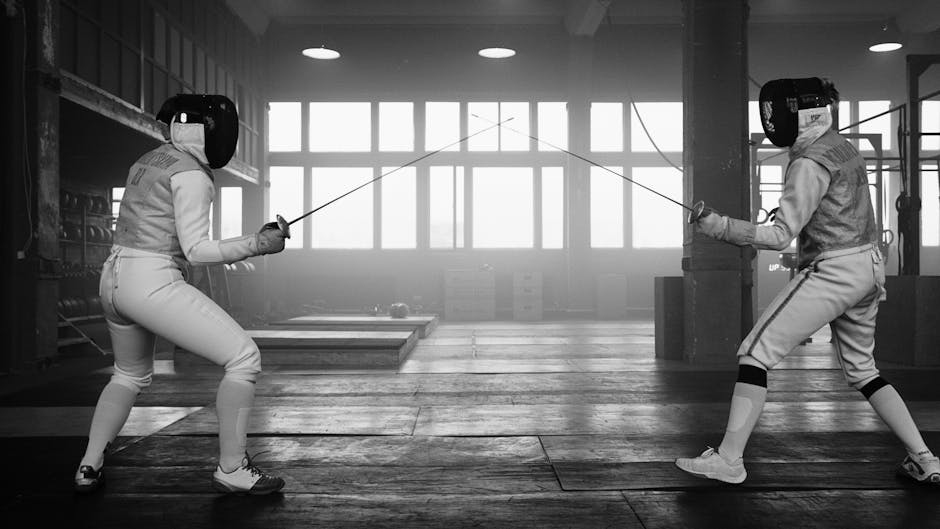Introduction: Rethinking Discipline
Traditional discipline—timeouts, raised voices, threats of lost privileges—doesn’t land the way it used to. Kids today are navigating a more complex emotional and social world, and the old carrot-and-stick just doesn’t cut it anymore. Fear might get quick compliance, but it rarely teaches better behavior. It just teaches kids to hide their mistakes more carefully.
What actually works? Strategies that build understanding, not just obedience. The goal now is long-term learning: helping kids make better choices because they understand the why behind the rule. That means patience. It means connection over control. And it definitely means rethinking “discipline” as a teaching tool, not a last resort.
A truly creative discipline strategy is flexible, human, and built on empathy. It honors the individual child while still holding boundaries. It doesn’t rely on power plays. Creative strategies often look simple—offering choices, using visuals, naming emotions—but under the surface, they’re doing big work: shaping self-awareness, accountability, and resilience.
This isn’t about being permissive. It’s about being intentional.
Welcome to discipline that actually teaches—and sticks.
Connection Before Correction
Discipline without connection feels like control. Kids know when you’re reacting instead of responding—and they push back harder. The truth is, correction works best when trust is already in place. If a child feels seen and safe, they’re far more open to redirection.
So what does that look like in the moment? Instead of barking a command or jumping straight to consequences, slow down. Get on their level—literally. Drop to eye height. Take a breath before speaking. A calm pause sends a signal: I’m not here to punish, I’m here to help you learn.
You don’t have to launch into a deep therapeutic talk every time. Sometimes it’s just a hand on the shoulder, a quiet, “I see you’re upset,” or a short moment of silence before you say anything. These tiny actions build a bridge. And discipline, if it’s going to work, needs to walk across that bridge first.
Natural & Logical Consequences
Discipline doesn’t always need a lecture or a raised voice. Sometimes, the best teacher is reality itself. Natural and logical consequences help kids connect the dots between their choices and what happens next. It’s not about controlling behavior through fear—it’s about helping kids understand the real-world impact of their actions.
Natural consequences happen on their own. A toy left in the yard might get rained on and stop working. No need for a punishment—the loss is the lesson. Logical consequences, on the other hand, are guided by parents but still make sense in context. If a child refuses to do their homework, the logical outcome might be missing screen time until the work gets done. It’s not revenge—it’s structure.
Here’s how it looks in action:
- A child slams their tablet in frustration. Result? The tablet is off-limits for a while—because things that aren’t treated with care need a break.
- Homework goes unfinished before dinner? The consequence might be having to stay in after school to catch up. It’s not about shaming—it’s about owning choices in a calm, direct way.
Using consequences isn’t about breaking your child down. It’s about helping them build the thinking muscle they’ll use for life. Actions have outcomes. That’s the kind of wisdom that sticks.
The Power of Choice
Kids push back when they feel powerless. Offering limited choices is a quietly powerful way to reduce that resistance. You’re not handing over the reins—you’re offering a controlled sense of agency. This small shift invites cooperation without a power struggle.
The key is to keep the options simple and acceptable to you either way. Think two or three specific choices, not a free-for-all. “Do you want to brush your teeth now or after pajamas?” Both get the job done, and the child gets a say. It’s structure with breathing room.
This tactic works especially well during transitions—bedtime, leaving the park, getting in the car—when kids are more likely to resist. Clear options cut through indecision and pushback. It’s discipline disguised as teamwork.
Time-In Instead of Time-Out
Time-In flips the script. Instead of isolating a child when emotions run high, it brings them closer—to a parent, a caregiver, or a calm space. It’s not about letting bad behavior slide. It’s about teaching kids how to slow down, name what they feel, and reset without shame. Time-In works best when a child is safe but dysregulated—angry, overwhelmed, or just spiraling. It’s not a free pass; it’s a different kind of boundary.
Helping kids develop emotional insight starts small. You don’t have to launch into a TED Talk on feelings. Start with basics: “You look frustrated,” or “It’s okay to be mad, but hitting’s not okay.” Anchor their emotions to words, and over time, they begin to spot the signals themselves.
The physical setup matters too. A calm corner or Time-In space should feel like comfort, not punishment. Think cozy chair, soft light, maybe a book or stress ball nearby. It’s not a retreat from consequences—it’s a reset button. Over time, kids learn to use it before things boil over. That’s the goal: regulation over reactivity.
Visual Schedules & Routines
Why Predictability Matters
Children thrive when they know what to expect. Predictable routines offer a sense of security, reduce anxiety, and create a smoother daily flow. When kids can anticipate what’s coming next, they’re more likely to cooperate—and less likely to resist.
- Predictability helps children feel safe and in control
- Reduces daily power struggles
- Builds independence and responsibility over time
Tools That Work for Younger Kids
Structure doesn’t need to be strict—it just needs to be clear. Visual tools are especially effective for younger children, who may not yet understand verbal instructions fully.
Try using:
- Picture schedules: Images of morning routines, bedtime steps, or chore sequences
- Sticker charts: Simple tracking for repeated tasks like brushing teeth or getting dressed
- Checklists with icons: Great for non-readers who can match tasks to symbols
These tools turn routines into something kids can “see,” making expectations tangible and empowering them to follow through without nagging.
How Visual Routines Reduce Defiance
Much of what looks like defiance is really confusion, frustration, or a push for autonomy. When routines are visually communicated:
- Kids are reminded of what’s next without constant adult intervention
- They feel more capable and respected, encouraging cooperation
- The risk of confrontation is minimized—because expectations are visible and consistent
Visual routines aren’t magic—but they help lay the groundwork for calmer, more cooperative days by shifting from reactive correction to proactive guidance.
Encourage Over Punish
Catch kids doing something right—and then name it. Generic praise like “good job” is fine, but targeted praise works harder. Say, “You stayed calm even though you were frustrated,” or “I noticed you helped your sister without being asked.” That kind of feedback tells kids exactly what behavior to repeat.
Specific praise does more than make them feel seen. It builds internal motivation. Instead of acting just to avoid punishment or earn rewards, kids start to see themselves as capable, kind, and responsible. That identity sticks.
This doesn’t mean false flattery. Kids can tell when you’re faking it. The key is to notice real effort and describe what you saw or heard. Slowly, you’re training their inner voice to say, “Hey, I handled that well.” And that’s worth more than stickers or screen time.
Repair, Not Shame
Kids will mess up. That’s part of learning. Instead of jumping straight to punishment, turn the moment into a conversation. Missteps are rich with teachable material—if we let them be. Ask questions. What happened? What would you do differently next time? Keeping calm opens the door for growth, not guilt.
Then comes repair. That doesn’t mean forced apologies or making a child say sorry because it’s expected. It means helping them take real steps to make things right. Did they snap at a sibling? Ask how they might rebuild that connection. Left a mess in the kitchen? Hand them a sponge, not a lecture.
This approach lowers the volume on power struggles. You’re not battling your child; you’re guiding them toward action. That builds ownership, and responsibility follows. Over time, kids learn that mistakes don’t define them—but how they respond does.
Parenting Note: Stay Calm, Consistent, Connected
When it comes to creative discipline, your mindset and energy as a caregiver can make all the difference. Children are highly perceptive—they react not just to rules, but to your tone, body language, and emotional state. Before enforcing any strategy, it’s important to ground yourself first.
Your Energy Sets the Tone
Children mirror adult energy. If you respond to conflict with calm confidence, they’re far more likely to de-escalate.
- Take a breath before responding to defiance or emotional outbursts
- Speak clearly, slowly, and with neutrality to reduce tension
- Use body posture (kneeling down, open stance) to signal safety, not threat
Staying grounded doesn’t mean ignoring misbehavior—it means correcting it from a place of clarity, not frustration.
Consistency Over Intensity
It’s not about being strict—it’s about being predictable. Kids feel secure when expectations and boundaries are clear and consistent.
- Use the same language or phrases for recurring situations (“We use gentle hands,” “We clean up after snacks”)
- Follow through every time, even when you’re tired or in a hurry—it builds trust
- Avoid escalating punishments; repetition and reliability are more effective than severity
Connection Is the Bridge
Discipline works best when it’s built on a foundation of connection. A child who feels emotionally safe with you is more likely to cooperate and learn.
- Stay emotionally available, even when setting limits
- Use everyday moments (mealtime, car rides, bedtime) to bond and build rapport
- Remind your child: “I’m here to help you, even when things are hard”
Remember, creative discipline isn’t a quick fix—it’s a relationship-driven approach that grows alongside your child. Your calm consistency creates the structure, and your connection brings it to life.
Conclusion: Real Change, Not Quick Fixes
Discipline as Guidance, Not Control
True discipline isn’t rooted in fear or force—it’s about helping children learn, grow, and thrive. Rather than trying to control behavior through threats or punishments, effective discipline focuses on teaching kids how to make better choices on their own.
- Focus on teaching, not punishing
- Help children build skills, not just compliance
- Prioritize long-term growth over momentary obedience
Every Child Is Unique
What works for one child may not work for another. That’s why flexibility is a crucial part of any discipline approach. Being willing to adjust your strategies based on the child’s temperament, age, and needs leads to better results—and a more trusting relationship.
- One-size-fits-all doesn’t work in real-life parenting
- Stay observant: what triggers or soothes your particular child?
- Adapt techniques while holding consistent boundaries
Raising Confident, Resilient Kids
Creative discipline strategies do more than just prevent meltdowns—they help shape children into capable and emotionally resilient human beings. Through connection, choice, and respectful guidance, parents lay the foundation for strong self-esteem and lasting emotional tools.
- Build inner motivation, not just obedience
- Encourage emotional intelligence by naming and managing feelings
- Support agency, empathy, and responsibility
Final Thought: Creative, respectful discipline isn’t about being permissive or rigid—it’s about finding the middle ground where your child feels seen, supported, and capable of growing.
(For more parenting tools and articles, visit Mom Smart Hub)


